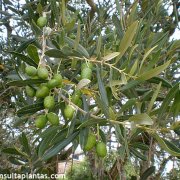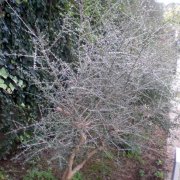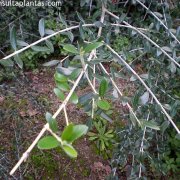Care of the tree Olea europaea or Olive |
|
The genus Olea, family Oleaceae, comprises 30 species of trees and shrubs native to Africa, Europe, Asia and Australia. Some species are: Olea europaea, Olea sylvestris, Olea capensis, Olea paniculata, Olea laurifolia. Common name: Olive. This species is native to the Mediterranean Basin. They are very long-lived trees (more than 1,000 years) of very slow growth that reach 15 meters (49.2 feet) in height. The bright leaves are opposite, perennial, oval in shape and whitish on the underside and dark green on the upper side. White flowers are not decorative. The famous fruits (olives) are harvested in autumn or winter. Olive is used for their commercial value (oil, olives), in gardens as isolated specimens, in pots for terraces and as bonsai. It's an ideal tree for Mediterranean gardens. Olea europaea needs full sun exposure. It resists high temperatures and occasional frosts. Olive grows in any soil that is well drained, even in dry substrate. The planting is done in spring. Water moderately all year long waiting for the substrate to dry. Olea europaea resists drought well. Fertilize in spring with manure. Prune in late winter to keep it compact and remove dry branches. Olive is prone to attack by moths, mealybugs and the olive fly; spray in spring and summer every 20 days with insecticide. If there is excess watering, fungal diseases can appear. Olea europaea is propagated from cuttings; it can also be grafted onto Olea europaea subsp. europaea or Olea sylvestris. |
Images of the tree Olea europaea or Olive |
Find plants
Olea europaea or Olive | Care and Growing
© 2025 FavThemes



